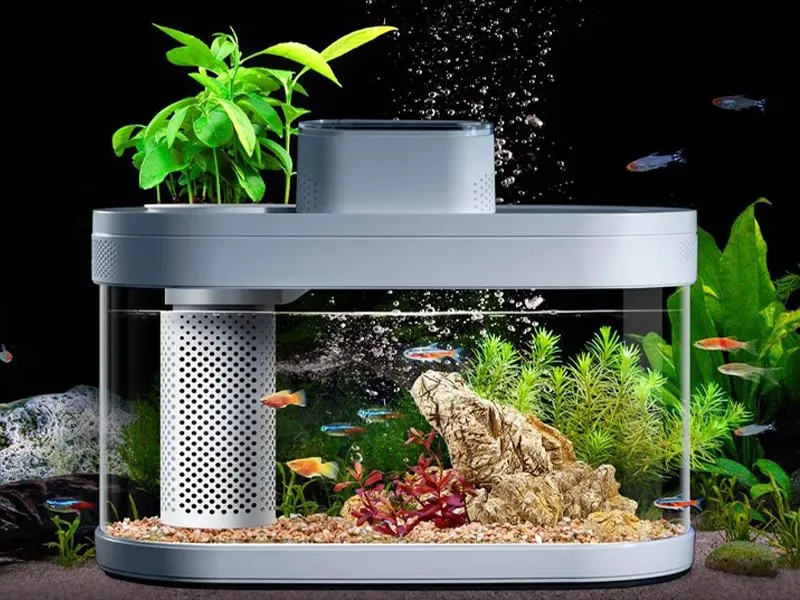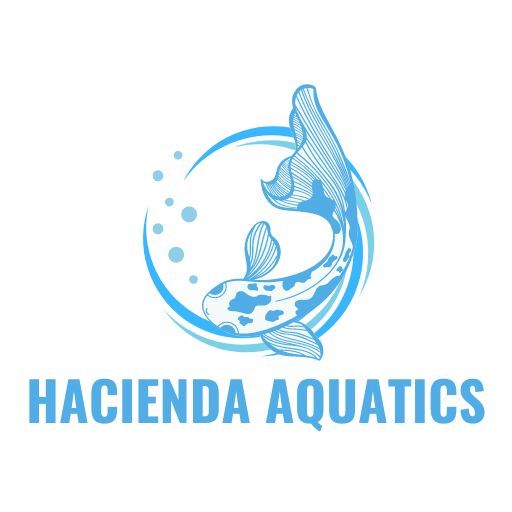Aquatic Knowledge
Why your aquarium has bubbles top water? Causes and solutions
If you’ve noticed bubbles forming at the top of your aquarium, you’re not alone. This is a common occurrence in both freshwater and saltwater tanks. But why does this happen, and is it something to worry about? In this article, we’ll explore the reasons why your aquarium has bubbles top water, how to prevent them, and whether or not they’re harmful to your fish.
Understanding Aquarium Water Chemistry

Before diving into the causes of bubbles and foaming, it’s important to grasp the basics of aquarium water chemistry. The health of your aquarium relies heavily on maintaining the right balance of elements such as pH, ammonia, nitrite, and nitrate levels. Regular testing and monitoring of these parameters ensure a stable environment for your aquatic life.
pH Levels:
- The pH level measures the acidity or alkalinity of your aquarium water. Different fish species thrive at different pH levels, so it’s essential to maintain the appropriate pH range for your specific fish.
- Regularly test your pH levels using a reliable test kit. Most freshwater aquariums should have a pH between 6.5 and 7.5, while saltwater aquariums typically require a pH between 8.1 and 8.4.
Ammonia:
- Ammonia is produced from fish waste, uneaten food, and decaying plant matter. It is highly toxic to fish and can cause severe health issues or even death.
- Use an ammonia test kit to monitor levels. Ideally, ammonia levels should be zero. If ammonia is present, take immediate action to reduce it through water changes and improving filtration.
Nitrite:
- Nitrite is another harmful compound resulting from the breakdown of ammonia by beneficial bacteria. While less toxic than ammonia, nitrite can still be dangerous to fish.
- Test nitrite levels regularly. Like ammonia, nitrite should be kept at zero. If nitrite levels are elevated, perform water changes and ensure your biological filtration is working effectively.
Nitrate:
- Nitrate is the final product of the nitrogen cycle. While less harmful than ammonia and nitrite, high nitrate levels can stress fish and promote algae growth.
- Aim to keep nitrate levels below 20 ppm (parts per million) in freshwater tanks and below 10 ppm in saltwater tanks. Regular water changes and maintaining healthy plant life can help manage nitrate levels.
Why aquarium has bubbles top water?

Bubbles in aquarium water can be a normal part of the environment, but they can also indicate underlying issues.
Normal Bubbles vs. Problematic Bubbles:
- Small bubbles forming along the tank walls or decorations are usually harmless and result from natural processes like surface agitation and oxygenation.
- Excessive bubbles or bubbles covering a large area may signal problems such as protein buildup or poor water quality.
Surface Agitation:
- Bubbles often form due to surface agitation caused by water pumps, filters, or air stones. This process is essential for oxygenating the water but can be excessive if not properly managed.
- Adjust the position and flow rate of your equipment to reduce excessive surface agitation.
Oxygenation Process:
- As water circulates and aerates, it absorbs oxygen and releases carbon dioxide, leading to bubble formation. Proper oxygenation is vital for the health of your fish.
- Ensure your tank has adequate water movement to facilitate gas exchange without creating excessive bubbles.
Foaming in Aquarium Water

Foaming is different from bubbles and usually indicates a buildup of organic material in the water.
Difference Between Bubbles and Foam:
- While bubbles are typically small and short-lived, foam consists of clusters of bubbles that persist on the water surface.
- Foam often has a soapy appearance and can cover large areas of the water surface.
Causes of Foam Formation:
- Foam is often caused by proteins and organic waste breaking down, creating a film that traps air. This can result from overfeeding, insufficient cleaning, or a high bioload.
- To reduce foam, maintain regular cleaning and feeding routines and ensure your filtration system is adequate for your tank’s bioload.
Common Causes of Bubbles and Foam
Several factors can contribute to the presence of bubbles and foam in your aquarium:
Protein Accumulation:Uneaten food, fish waste, and decaying plants release proteins that can create foam. Regularly remove uneaten food and dead plant matter to prevent protein buildup.
Organic Waste:High levels of organic waste can result from overfeeding or insufficient cleaning. Regular maintenance, including water changes and substrate vacuuming, is crucial to managing organic waste.
Improper Cleaning:Infrequent or inadequate cleaning allows debris to accumulate, leading to foam formation. Develop a consistent cleaning schedule to keep your tank free of excess waste.
Overfeeding:Excess food decomposes in the water, contributing to protein buildup and foam. Feed your fish only what they can consume in a few minutes and remove any uneaten food promptly.
Impact of Bubbles and Foaming on Aquarium Health

Bubbles and foam can significantly impact your aquarium’s health.
Stress on Fish:
- Persistent bubbles and foam can stress fish, leading to health issues. Stressed fish are more susceptible to disease and may exhibit abnormal behavior.
- Monitor your fish for signs of stress, such as erratic swimming, hiding, or loss of appetite.
Water Quality Issues:
- Excessive organic matter can degrade water quality, making it unsuitable for your fish and plants. Poor water quality can lead to a host of problems, including algae blooms, fish illness, and plant decay.
- Regular testing and maintenance are essential to ensure your water quality remains optimal.
By understanding the chemistry of your aquarium water and the causes of bubbles and foaming, you can take proactive steps to maintain a healthy and vibrant aquatic environment. Regular monitoring, proper feeding practices, and consistent cleaning will help you prevent and address issues, ensuring your aquarium thrives.
Fixing the Bubble Issue: A Step-by-Step Guide
If you’ve identified that your aquarium has bubbles top water, it’s time to take action. Here’s a simple guide to help you resolve the issue:
Step 1: Clean the Surface of the Water
Using a fish net or paper towel, gently skim the surface of your water to remove any visible bubbles or film.
Step 2: Check Your Filter
Ensure that your filter is functioning properly and that there is enough water flow to break up surface tension. Adjust the filter’s output if needed.
Step 3: Perform a Water Change
Remove 20-30% of the tank water and replace it with fresh, treated water. This helps to dilute any excess protein or waste that may be causing the bubbles.
Step 4: Use a Surface Skimmer
If you’re still having trouble with bubbles, consider adding a surface skimmer to your tank. This will help to keep the water surface clear and reduce the build-up of proteins.
How to Maintain a Clean Water Surface in Your Tank
Prevention is key when it comes to avoiding bubbles. Regular water changes and proper filtration can help maintain a clean surface. Make sure to monitor your fish’s diet and avoid overfeeding, as excess food can lead to protein build-up. Additionally, using a good-quality filter that agitates the surface can break up bubbles before they become a problem.
The Role of Aeration and Filtration in Preventing Bubbles
Aeration and filtration are crucial in keeping the water in your aquarium oxygenated and free of excess proteins. A strong filter will help to break up surface tension, preventing bubbles from forming, while an air stone or bubbler can introduce more oxygen into the water, which improves overall water quality.
Regular Maintenance to Avoid Bubble Build-Up
Keeping up with regular maintenance is one of the easiest ways to avoid bubbles. Here are some tips to stay on top of your tank care:
- Water changes: Perform a 20-30% water change every one to two weeks to keep the water clean.
- Filter cleaning: Check and clean your filter regularly to ensure it’s running at optimal performance.
- Vacuum substrate: Use a gravel vacuum to remove debris and uneaten food from the bottom of the tank.
Conclusion
If your aquarium has bubbles top water, it’s usually not a cause for panic, but it can signal underlying issues with water quality or surface tension. Whether the bubbles are caused by protein build-up, surface tension, or poor filtration, the good news is that these issues are fixable. By taking steps to clean your tank, improve filtration, and perform regular maintenance, you can keep your aquarium healthy and bubble-free.
FAQ
Why Are There Bubbles on My Fish?
Bubbles on fish can be a sign of gas bubble disease or excess oxygen in the water. Check your water parameters and aeration.
How Often Should I Clean My Aquarium?
Regular maintenance is key. Perform partial water changes weekly and clean the tank and equipment every few weeks.
Can Overfeeding Cause Foam?
Yes, overfeeding leads to excess food decomposing, which contributes to foam formation.
Is Foam Always a Bad Sign?
Foam often indicates organic waste buildup, but it can be managed with proper cleaning and maintenance.
How Can I Improve Water Quality Quickly?
Perform a partial water change, clean the tank, and check your filtration system to quickly improve water quality.
